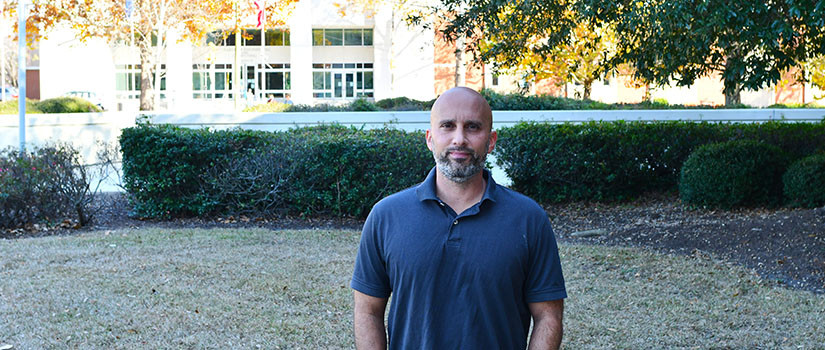Drug-coated balloons (DCBs) are endovascular devices used for treating diseased blood vessels. They are most commonly used for peripheral artery disease, in which narrowed arteries reduce blood flow to the legs. Unlike traditional balloon therapy (angioplasty), the balloon is coated with a material that transfers a therapeutic drug to the arterial wall. But with current DCBs, only about 10% of the drug is transferred to the targeted site during a typical 2-to-3-minute inflation procedure.
Understanding the underlying biophysical mechanisms of DCBs could help increase drug delivery efficiency, and Mechanical and Biomedical Engineering Associate Professor Tarek Shazly will work on this challenge as part of a collaborative study with other universities and medical facilities.
The $2.1 million, four-year National Institutes of Health (NIH) award (R01), which focuses on the development of novel DCBs, was granted to a research team including Shazly and participants from Boston University, Boston Medical Center and Massachusetts General Hospital/Harvard University. Shazly is the principal investigator of the University of South Carolina sub-contract site.
“Drug-coated balloon therapy is a leave-nothing-behind strategy because you go in, inflate the balloon, and then completely remove it. This is opposed to going in, inflating a balloon, and leaving a stent in the vessel, which is a standard treatment for vascular disease,” Shazly says. “Drug coated balloons themselves are an established technology and have a history of use, but we are trying to make design improvements to address the issue of low drug delivery efficiency.”
According to Shazly, while current DCBs have clear clinical utility, there is potential for these devices to be more successful and used broadly if some basic engineering aspects are addressed. The research could lead to not only more successful deployment but also increased efficiency and targeting, which includes usage for coronary circulation.
“Our work will center around looking at different materials’ science-based approaches through a mechanical lens to try to optimize the delivery of drugs from these devices,” Shazly says. “UofSC's research role is on the mechanical and microstructural side, while our collaborators are considering cellular effects and animal models when deploying the devices we plan to make.”
The mechanical testing and image-based analysis at UofSC will focus on device development and characterizations. Shazly’s research has already started with mechanical characterizations of the excipients, which is the polymer component of the coatings that are used to deliver the drugs.
“We will consider new excipient-drug combinations and plan to look at the relationship between compositional variation of the coating and the microstructure and ultimately how this determines contact mechanics during DCB deployment,” Shazly says.
Shazly will send his research and testing results to his collaborators at Boston Medical Center for machine learning based image analysis. Afterwards, he and his team will propose different devices to test by doing pre-clinical studies on rabbits. The work will be done at Massachusetts General Hospital.
“The way these projects are organized is that you do some benchtop/in-vitro testing in the first few years using the tools and techniques in our particular area of expertise and then graduate toward a particular device that’s evaluated in an animal,” Shazly says.
Shazly is excited to work on this project because NIH will not fund too many R01 grants on a particular research area, and he sees a chance to make a real clinical impact. He credits the collaborative environment of the college’s Biomedical Engineering program for successfully attaining the grant. “Our Biomedical Engineering Program Director Mark Uline and the associated faculty from both the College of Engineering and Computing and the School of Medicine have made extensive efforts that promote inter and intra-university collaborations that are essential for securing these grant initiatives.”
Shazly also doubts that there is more than one other R01 grant in the country currently looking at DCBs, specifically at the device design level.
“It’s a promising device that is limited by a well-identified problem, and if we can fix the problem, that will make a significant clinical impact,” Shazly says. “If we can reliably increase drug delivery efficiency, that will be a path towards clinical translation of our research.”
